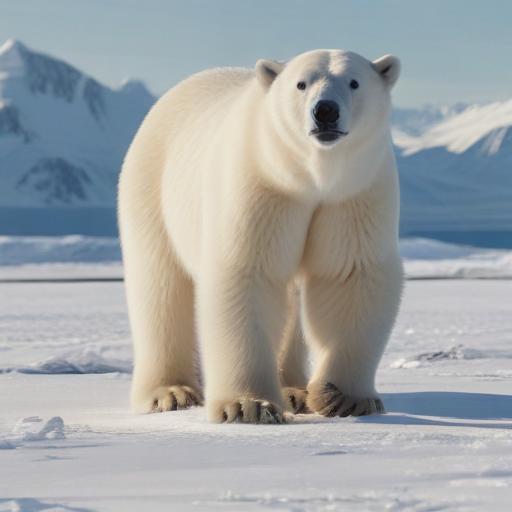In an effort to gain insight into the lives of polar bears, scientists are utilizing GPS collars to track the movements and behaviors of these magnificent Arctic predators. A standout among them is a bear named Betty White, known for her impressive travels across the eastern Hudson Bay region.
Alysa McCall, a staff scientist and director of conservation outreach at Polar Bears International, noted that Betty White has captured public attention with her recent journey that took her all the way to Hudson Bay’s eastern coast and back. Betty is observed to have two yearling cubs and is known for her exceptional hunting skills, often capturing seals and maintaining good health, a crucial factor for her cubs’ survival.
McCall has been part of Polar Bears International for over a decade and uses the organization’s online bear tracker—an interactive tool that lets the public see the latest movements of collared female polar bears. This tracking system reveals valuable data about the bears’ reproductive status, health, and movements, which are essential for understanding their biology and gathering insights into how they are adapting to ongoing changes in their environment.
Another bear, Vicky, has also been tracked while she was denned and pregnant. Although her collar stopped transmitting, researchers were able to spot her with two new cubs this spring, further emphasizing the importance of tracking these bears, especially during significant life stages.
The study of polar bears doesn’t solely rely on GPS collaring; new tracking technologies are being tested to gain more comprehensive insights into younger and male bears, who cannot wear traditional collars. The Cochrane Polar Bear Habitat has been involved in testing a minimally invasive device known as the Bur on Fur, which researchers hope will enhance data collection regarding these bears’ movements.
The information collected from these tracking efforts is crucial as it allows researchers to monitor the effects of climate change on polar bear populations in the Western and Southern Hudson Bay areas. McCall explained that the data gathered will help inform conservation strategies, especially as polar bear populations are facing decline due to the loss of sea ice.
As spring unfolds in the Arctic, bears like Betty White are fattening up after the long winter. This season signifies a critical time for new cubs, with adult females preparing to wean and potentially mate again. Observations such as the fat scorecard, which assesses the health condition of bears, provide insight into the impact of environmental stressors, including ice conditions that directly affect their survival.
Locations like Churchill, Manitoba, known for hosting the largest annual gathering of polar bears, present unique opportunities for researchers and the public to witness these remarkable creatures up close, enhancing our understanding of their behaviors and needs.
As scientists continue to gather and analyze data from polar bears like Betty White, there remains a glimmer of hope for their future. Continued research and monitoring will provide the insights needed for effective conservation efforts, emphasizing the importance of preserving the habitats of these iconic Arctic mammals. Fans and researchers alike can continue to follow Betty White’s journey through Polar Bears International’s tracking platform.
